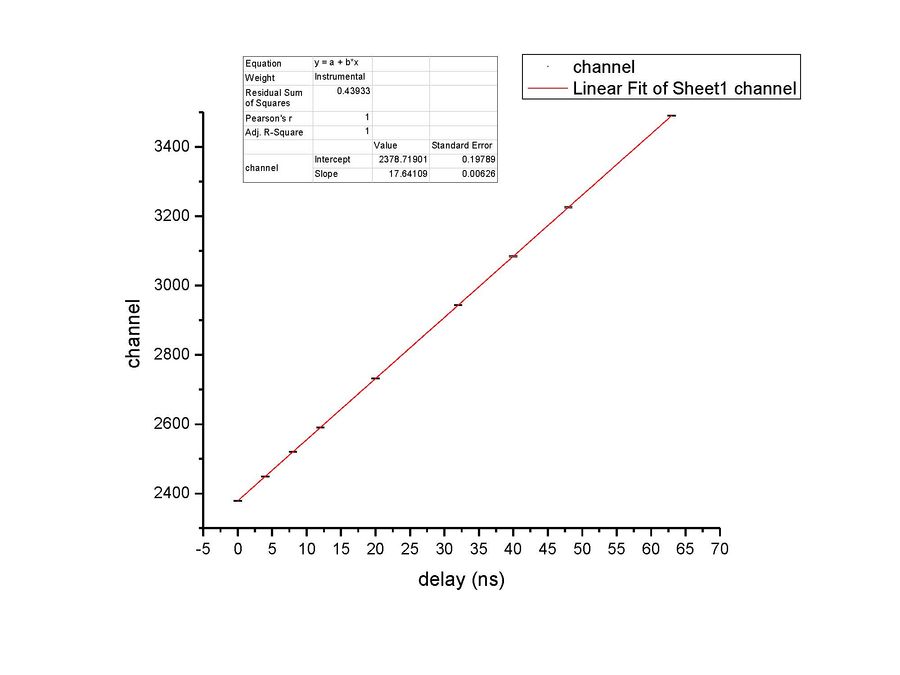Difference between revisions of "September 8, 2011"
Jump to navigation
Jump to search
| Line 51: | Line 51: | ||
==Summary of what was been done== | ==Summary of what was been done== | ||
| − | {| border="1" cellspacing="0" style="text-align: center; width: 1100px | + | {| border="1" cellspacing="0" style="text-align: center; width: 1100px " |
! scope="col" width="40" | Run # | ! scope="col" width="40" | Run # | ||
! scope="col" width="40" | Beam | ! scope="col" width="40" | Beam | ||
| Line 58: | Line 58: | ||
! scope="col" width="40" | Radiator | ! scope="col" width="40" | Radiator | ||
! scope="col" width="40" | Target | ! scope="col" width="40" | Target | ||
| − | ! scope="col" width="400" style="text-align: left | + | ! scope="col" width="400" style="text-align: left " | Comments |
|- | |- | ||
|2321||On ||In ||Open ||In ||No ||Pair-spectrometer rate measurements with collimator open | |2321||On ||In ||Open ||In ||No ||Pair-spectrometer rate measurements with collimator open | ||
Revision as of 23:29, 8 September 2011
Thursday Run Plan (blue is done)
- Push dump magnet upstream as far as possible
- Shield around it with lead as far downstream as possible. (Last time, this helped a lot.)
- Calibrate TDC
- Get a TOF spectrum with the D2O target. Set detector thresholds.
- Verify that most of the photons, as measured by the neutrons from D2O and the pair spectrometer, are coming through the photon collimators. Do this by looking at both count rates for radiator in and photon hole blocked and unblocked. 99.2% of the photons, as measured by the pair spectrometer, are coming through the collimator holes.
- Initiate studies of backgrounds, where “background” is defined as photons not coming from the radiator. Do radiator in/radiator out runs for beam on central position. Look at count rates for both neutrons from D2O and pair spectrometer. 93% of the photons, as measured by the pair spectrometer, are coming from the radiator.
- Check for time stability of ratios of backgrounds to good stuff.
- Do background studies (radiator in/out) for beam up and beam down.
- Evaluate if hardener is useful. If so, optimize thickness.
- Do D2O asymmetry measurements.
some notes
- neutron rest mass is about 940 MeV
- 1 ns speed of light is about 30 cm. So
- 135 cm is about 4.5 ns for gamma
neutron TOF calculation in non-relativistic limits:
- 135 cm is about 136 ns for 0.5 MeV neutron (3.3% of the speed of light)
- 135 cm is about 98 ns for 1 MeV neutron (4.6% of the speed of light)
- 135 cm is about 69 ns for 2 MeV neutron (6.5% of the speed of light)
- 135 cm is about 60 ns for 3 MeV neutron (7.9% of the speed of light)
- 135 cm is about 49 ns for 4 MeV neutron (9.2% of the speed of light)
- 135 cm is about 44 ns for 5 MeV neutron (10.3% of the speed of light)
- 135 cm is about 31 ns for 10 MeV neutron (14.6% of the speed of light)
TDC Calibration
NIM to ECHO translator channel 0
0.056689342404 ns per 1channel 5.67 ns per 100 channel 56.7 ns per 1000 channel
Summary of what was been done
| Run # | Beam | Dump magnet | Collimator | Radiator | Target | Comments |
|---|---|---|---|---|---|---|
| 2321 | On | In | Open | In | No | Pair-spectrometer rate measurements with collimator open |
| 2322 | On | In | Blocked | In | No | Pair-spectrometer rate measurements w/ collimator blocked w/ lead, 6" upstream, 4" downstream. |
| 2323 | On | In | Open | In | No | Repeat 321 |
| 2324 | On | In | Open | Out | No | Study of radiator in/out effect by comparing w/ previous run. |
| 2325 | On | In | Open | In | No | |
| 2326 | On | In | Open | In | No | |
| 2327 | On | In | Open | In | No | |
| 2328 | On | In | Open | In | No | |
| 2329 | On | In | Open | In | No | |
| 2330 | On | In | Open | In | No | |
| 2331 | On | In | Open | In | No | |
| 2332 | On | In | Open | In | No | |
| 2333 | On | In | Open | In | No | |
| 2334 | On | In | Open | In | No | |
| 2335 | On | In | Open | In | No | |
| 2336 | On | In | Open | In | No | |
| 2337 | On | In | Open | In | No | |
| 2338 | On | In | Open | In | No |
